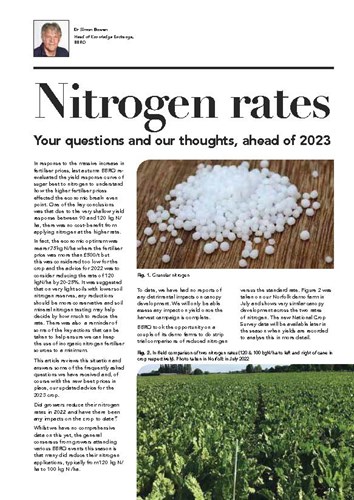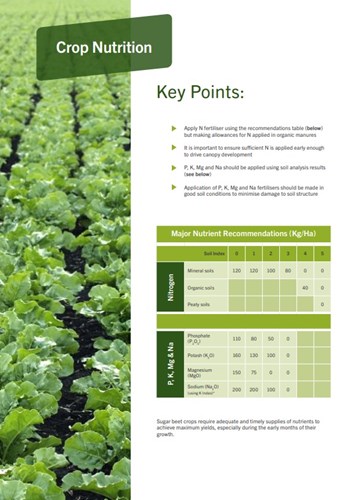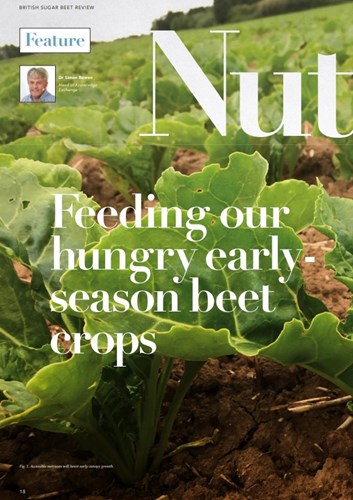Nitrogen (N) is a major component of the proteins and enzymes that drive plant growth. It is essential for the rapid development of the leaf canopy and the capture of solar radiation during the early stages of sugar beet growth.
As an example, a typical sandy loam soil with less than 2% organic mater, receiving no organic manure will have 60kg N/ha available after a cereal crop and a further 60kg N/ha may be mineralised during the season. Along with 120kg N/ha of applied N fertiliser this would provide a total of 240kg N/ha, sufficient to support maximum yield. Sufficient N is therefore required during the early stages of growth to enable shoots to acquire the 90-120 kg N/ha required to produce the three units of leaf area index needed to fully cover the soil and maximise radiation interception. Excessive or late uptakes of N do not increase yield, only beet impurities.
The sugar beet yield response curve to nitrogen is based on extensive trials work by both the former Broom’s Barn Research Station and more recently by BBRO. Over 150 trials have been undertaken across a range of soil types, and seasons providing a very reliable and consistent response to nitrogen. Based on these data sets, a representative nitrogen response curve for sugar beet is presented below.

With the current trend towards high nitrogen prices, the economic optimum is less than the current recommendation of 120kg N/ha.
Depending on fertiliser costs, the economic optimum is between 75 and 90 kg N/ha. Reducing the rate to 75 kg N/ha is likely to risk decreasing yields too much and will affect overall crop profitability of many commercial crops. Reducing rates to 90-100 kg N/ha is a sensible compromise.
Nitrogen placement
Placement of some of the nitrogen requirement (banded 5-10 cm below and to the side of the seed) has shown that crops can access and utilise N more efficiently. Typically, placement of 40-60 kg N/ha is placed, the remainder being applied at emergence. This frequently improves early canopy development and in some instances plant population. Yield responses of 10-20% have been recorded. Yield responses tend to be greater in dry springs/seedbeds.
Additionally, a reduction in overall nitrogen rates of 15% have been achieved where placing nitrogen in a band to the side and below the seed. Commercial strip trials have shown that reduced rates from 120 to 100 kg N/ha can be achieved. There is limited data on reducing rates more than this using placement techniques.









